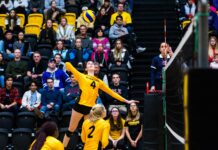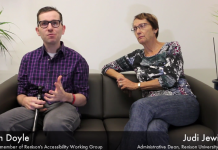The department of Athletics and Recreation’s head athletic therapist, Rob Burns, is leaving the department after 19 years to take on a new professional challenge.
“I’ve definitely enjoyed my time in athletics and it’s developed into a longer career than I ever imagined, in terms of working in this setting,” Burns said. “It was my dream job when I first got it. It’s challenging in terms of different aspects.
Burns isn’t going far. He’s joining Applied Health Sciences in the Kinesiology Department.
“Moving to this new position is great in terms of creating a pathway between athletics and kin[esiology]. It’ll be great having somebody to touch base with, being able to connect the right people to the right places and grow both programs over time,” he said.
Burns started with the Warriors in 1999 and spearheaded the development and growth of student therapists and athletic therapy for student-athletes. The program now has 75 student therapists who support athletes on 32 varsity teams.
Burns has taught classes part-time and has always focused on teaching his students and student-therapists theory, along with skills and techniques they can use in real world situations to help athletes or people overcome or deal with injuries in a way that improves their life or athletic skill, while not making their injuries worse.
“What I try to do in all classes I teach is try to make it so students have a sense of understanding basic techniques, understand core curriculum and take it from the classroom and use skills, be hands on and apply those skills in a real world setting,” he said. “It’s great to learn the basics in class, but they need to factor in all the human factors. It’s difficult to encompass and cover, everybody comes at it with a different set of history and injury. I try to get students to understand that and apply [it].”
Burns plans to keep in touch with the department with the hope of strengthening the relationship between the athletics and kinesiology departments to continue growing the student therapist/trainer program.
“I still foresee growing the interaction between athletics. With me being the conduit between the two departments so athletics can gain expertise from professors and help athletes develop further, help researchers tap into the pool of student-athletes and participants in both varsity and the recreational side, and find people who can help them further the research in their expertise or area,” he said.





























